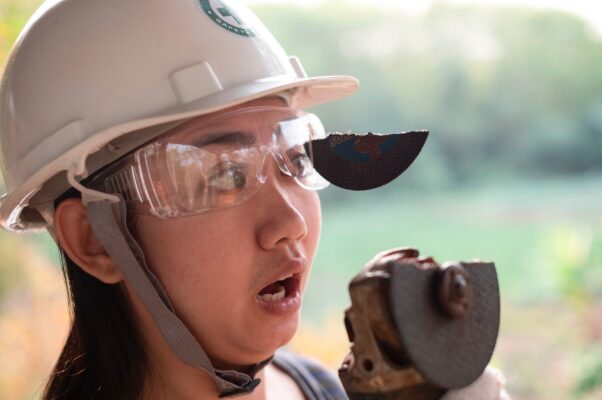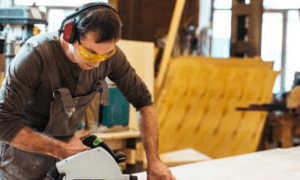Every profession is a threat to your eyes. Your vision is precious. You need the right tools to safeguard it. Protective Safety glasses will stop threats in their tracks. The right glasses fit your profession and enhance comfort. Workers wear those that are comfortable. They prevent injuries and penalties, and they stay efficient. They wear brands like Pentax safety glasses or trustworthy brands like 3M Pentax safety glasses. Some need Pentax prescription safety glasses for uninterrupted vision. Other workers use protective eye glasses to guard against dust or sparks. This guide helps you choose eyewear that suits your work hazards. Read below to discover the ideal match for your workplace and your eyes.
Know the Hazards of Your Job
Knowing your risk is crucial. Your glasses need to be constructed for it.
Recognize the Type of Risk
- Debris flying due to cutting or grinding
- Chemical splashing in labs or cleaning
- Radiation and UV from welding
- Dust and fine particles in dusty environments
Risk Level Evaluation
- Ask: What is most likely to hit your eyes? How often is it going to happen?
- At what frequency?
- Is it going to irritate or burn?
- Ask a safety officer or an expert.
Refer to your workplace risk assessment to guide lens choice.
Real-World Example
A metal worker wore protective safety glasses daily. He failed to replace scratched lenses. A metal sliver one day shattered the lens and scratched his eye. He needed stitches. A tiny break in a lens can conceal a massive danger. A quick lens check is cheap insurance.
Pay Attention to Safety Certification and Standards
Standards make your glasses function.
ANSI Z87.1 Standard (United States)
Look for “Z87” printed on lenses. Z87+ is impact-rated. This protects against flying particles and impact.
International Standards
Europe uses EN 166. Canada uses CSA Z94.3. Double-check your country’s protective safety glasses regulations.
Specific Industry Requirements
Certain professions, like welding, laboratories, or construction, may have extra certification requirements. Always follow your industry requirements.
Tip
Find z87-certifications or other marks on labels. Avoid cheap equipment without a certification mark.
Types of protective safety glasses
Choose the style that is best suited for your work.
- Basic glasses: light or clear lenses for general use.
- Wraparound glasses: Offer side protection. Good for dust and wind.
- Over-the-glasses: Placed over safety glasses or prescription glasses.
- Goggles: Enclose the eyes. Ideal for chemicals or splash hazards.
- Face shields: Guard face and eyes at once. For complete protection, wear glasses underneath them.
Options are Pentax safety glasses or safety vision glasses. OTG styles fit wearers of Pentax prescription safety glasses. Some workers prefer Pentax safety glasses frames for easy lens replacement.
Most Important Features to Look for When Choosing Safety Glasses
Under the style, protect your vision.
Lens material:
- Polycarbonate is rugged, shatterproof, and UV-blocking.
- Trivex is crystal clear and very lightweight.
- Glass is scratch-proof but breakable.
- Acrylic is cheap but less protective.
Lens coatings:
- Use anti-scratch for optimum life.
- Use anti-fog in warm or humid environments.
- Choose UV protection for the sun.
- Mirror coating reduces glare outside.
Lens color:
- Clear for general indoor use.
- Gray or smoke for high outdoor light.
- Yellow for low-light usage.
- Green or welding shade for arc work.
- Comfort and fit:
- Cushioned nose pads and adjustable temples.
Lightweight Pentax safety glasses frames make all-day wear easy. OTG styles for individuals who wear glasses.
Prescription requirements:
Get Pentax safety glasses frames for protection and good vision in one.
Choose the strength and design glasses for your location.
Relating Safety Glasses to a Particular Workplace Hazard
Fit the gear to your hazard. Proper fit equals total protection.
Impact Hazards
Fragments of flying chips, metal, and rock. Wear Pentax safety glasses z87 or similar high-impact frames. Get polycarbonate lenses and wrap style. Choose anti-scratch for long-term exposure.
Chemical Hazards
Splashes and chemical fluids need side-shielded goggles or glasses. Make sure lenses are resistant to chemicals. Safety vision glasses with gasketing also meet needs. Put on anti-fog coating.
Radiation Hazards
Welders need auto-darkening helmets or shade-rated lenses. Shields need ANSI and EN. Tinted glass helps support tasks.
Outdoor/Extreme Weather
Bright sunlight and dust demand UV-filtering glasses with excellent side protection. Consider polarization. 3M Pentax safety glasses are clear and comfortable. Choose the wraparound type.
Biological Hazards
Medical or bio laboratories demand splash-protected glasses or goggles. Choose anti-fog coatings. Face shields also do the job. Goggles are leak-tight.
Prescription Needs
Prescription wearers can choose OTG frames or obtain Pentax prescription safety glasses. This gives vision and protection in one pair.
Table: Pairing Hazards to Recommended Types of Eyewear
| Hazard | Recommended Protective Glasses |
| Impact | Pentax safety glasses z87, polycarbonate, wraparound, anti-scratch |
| Chemicals | Goggles or protective eye glasses with side shields, splash-rated |
| Radiation (Welding) | Shade-rated lenses or auto-darkening helmets |
| Outdoor/Dust/UV | Wraparound safety vision glasses, UV-blocking, polarized |
| Biological/Bio labs | Anti-fog goggles or protective safety glasses with full seal |
| Prescription need | OTG frames or Pentax prescription safety glasses, custom lenses |
Side Shields and Face Coverage
Full and side coverage provides a vital line of defence.
Why Side Protection Matters
Particles travel fast. Side shields keep debris and liquids from slipping in around the lens. Without them, your eyes are still at risk.
Types
- Wraparound frames are constructed with a seal around the eyes.
- Simple glasses can have push-on side shields attached to them.
- Face shields cover the face. Wear them over glasses under.
Layered Protection
When engaging in risky tasks at work, use goggles or glasses with face protection. This layer offers protection against splashes, sparks, and high-speed particles.
Replacing scratched or cracked lenses, even 3M Pentax safety glasses, provides full coverage. People buy Pentax safety glass frames to replace lenses or add shields. This keeps the fit tight and safe.
Conclusion
The right choice of protective safety glasses prevents health and sight damage. Note the job hazards and match lenses and glasses with the hazards. Check certifications like Pentax safety glasses Z87. Check the material, coatings, and how comfortable it is. Wear 3M Pentax prescription safety glasses or OTG frames when needed. For complete protection, fasten face or side shields.































